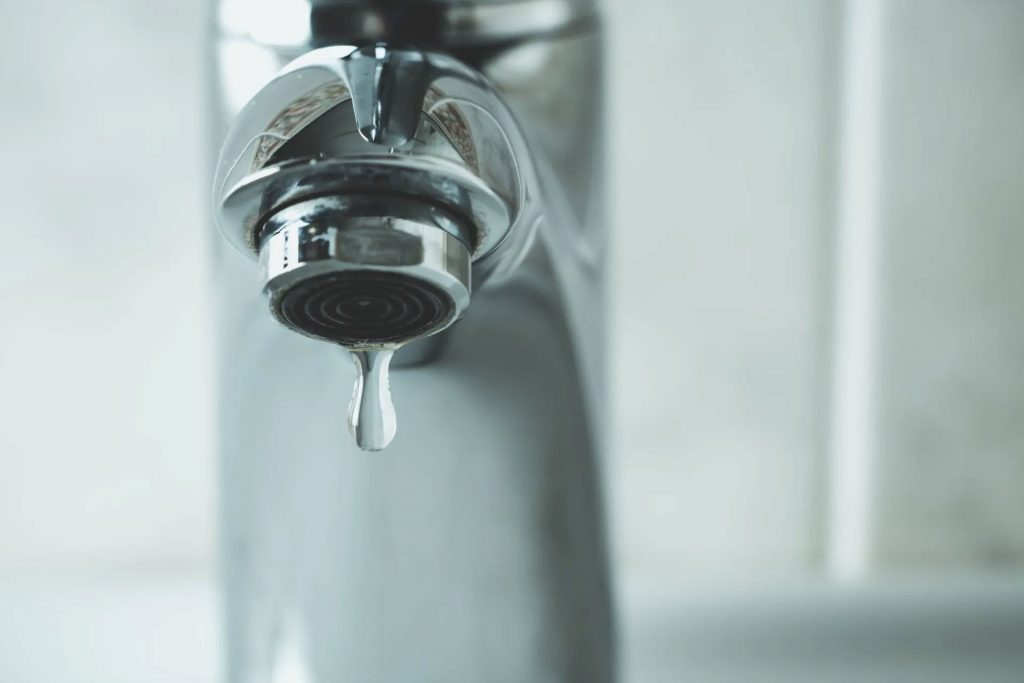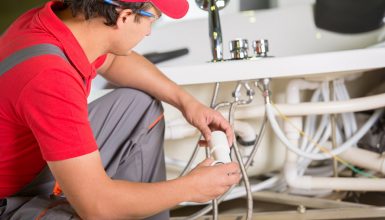Quick Steps for Limited Water Pressure in Your Home
Quick Steps for Limited Water Pressure in Your Home
Blog Article
What're your thoughts on 4 Ways to Troubleshoot Low Water Pressure?

Low water stress in your home can be a discouraging trouble, impacting everything from showering to cleaning recipes. If you're experiencing weak water circulation, there are a number of possible reasons and remedies to check out. In this overview, we'll go over usual reasons for low water pressure and useful steps to address the problem effectively.
Introduction to Low Tide Stress
Low water pressure occurs when the circulation of water from your faucets, showers, and other components is weak than typical. This can make day-to-day tasks extra tough and less effective. Comprehending the root causes of low water stress is vital to finding the right solution.
Typical Root Causes Of Low Water Pressure
Pipeline Obstructions
Gradually, pipes can end up being blocked with natural resource, debris, or debris, restricting the circulation of water. This is an usual concern in older homes with galvanized steel pipelines.
Deterioration
Deterioration within pipes can lead to leaks and lowered water stress. Rust build-up can restrict water flow, especially in aging plumbing systems.
Faulty Stress Regulatory Authorities
Stress regulators are responsible for keeping constant water pressure in your home. If they malfunction, it can result in low tide pressure or irregular flow throughout your house.
Community Water Supply Issues
Sometimes, the issue exists outside your home. Community water system concerns, such as main line leakages or upkeep job, can temporarily lower water pressure in your location.
Exactly How to Diagnose Low Tide Stress
Inspecting Faucets and Fixtures
Beginning by testing the water pressure at various faucets and fixtures throughout your home. If the concern is separated to particular locations, it might suggest localized troubles.
Inspecting Pipes
Check noticeable pipes for indicators of leaks, rust, or obstructions. Pay attention to any type of unusual sounds, such as knocking or rattling pipelines, which can indicate problems within the plumbing system.
Consulting with a Plumber
If you're unable to identify the source of low tide stress, consider hiring a professional plumber to conduct a comprehensive assessment. They can recognize underlying problems and advise ideal services.
DIY Solutions to Fix Low Tide Pressure
Cleansing Aerators and Showerheads
Mineral deposits can gather in aerators and showerheads, reducing water flow. Remove and clean these components on a regular basis to enhance water pressure.
Flushing Water Heater
Sediment accumulation in the hot water heater can limit flow and decrease efficiency. Flushing the container regularly assists get rid of debris and maintain optimum efficiency.
Inspecting Stress Regulator
Make sure that the stress regulator is operating correctly. Readjusting or changing the regulatory authority can help bring back correct water pressure throughout your home.
Clearing Up Clogs in Pipes
For small clogs, attempt making use of a plumbing serpent or chemical drain cleaner to clear obstructions in pipelines. Be cautious when making use of chemicals and adhere to safety and security standards.
When to Call an Expert Plumber
If DIY initiatives stop working to resolve the issue or if you suspect significant plumbing issues, it's finest to look for aid from an accredited plumber. They have the expertise and devices to attend to complex problems securely and successfully.
Safety Nets to Preserve Water Pressure
Regular Maintenance
Arrange routine maintenance for your plumbing system to prevent issues such as corrosion, leakages, and blockages. Dealing with small problems early can aid prevent more significant repair work later.
Mounting a Stress Booster
Consider setting up a pressure booster pump to boost water pressure in locations with consistently reduced circulation. This can be specifically advantageous for multi-story homes or buildings with high-demand components.
Surveillance Water Use
Be mindful of water use routines and prevent ill-using the plumbing system. Straightforward modifications, such as shocking showers and laundry loads, can help maintain ample water stress.
Conclusion
Dealing with low water pressure can be aggravating, however recognizing the underlying causes and executing proper options can restore ideal circulation throughout your home. Whether it's cleaning aerators, inspecting pipes, or consulting with a plumber, taking proactive steps can make sure a constant supply of water for your everyday demands.
FOUR WAYS TO FIX LOW WATER PRESSURE NOW
Turning on a shower or faucet only to find the water comes out in a sad, slow drizzle is never a good feeling. How exactly are you supposed to wash a pan or take a quick shower when it takes 10 minutes just to rinse off a little soap? The good news is that when your water pressure is bad, there's always a cause: typically one that can be easily fixed. Here are some of the most common causes of low pressure and what you can do to fix the issue:
DEBRIS AND MINERAL DEPOSIT BUILDUPS
If you notice low water pressure from just one or two of the fixtures in your house, the problem likely has to do with debris buildup. Water is full of minerals and other debris, all of which can accumulate in your pipes and on your fixtures. This can cause a blockage that affects how much water flows through. To fix this, try filling a small plastic bag with white vinegar, and use a rubber band to hang it around your showerhead or faucet. Let the head of the fixture soak for a few hours, and the vinegar should loosen the deposits.
WATER LEAKS
Leaks are another common cause of low water pressure. If water is flowing out of your plumbing through a hole or crack before it can reach your fixture, the pressure coming out of the faucet or showerhead will be lower. A plumbing professional is your best bet for finding and repairing a leak in your water supply pipes.
Leaks are another common cause of low water pressure. If water is flowing out of your plumbing through a hole or crack before it can reach your fixture, the pressure coming out of the faucet or showerhead will be lower. A plumbing professional is your best bet for finding and repairing a leak in your water supply pipes.
FOUR WAYS TO FIX LOW WATER PRESSURE NOW
Turning on a shower or faucet only to find the water comes out in a sad, slow drizzle is never a good feeling. How exactly are you supposed to wash a pan or take a quick shower when it takes 10 minutes just to rinse off a little soap? The good news is that when your water pressure is bad, there's always a cause: typically one that can be easily fixed. Here are some of the most common causes of low pressure and what you can do to fix the issue:
DEBRIS AND MINERAL DEPOSIT BUILDUPS
If you notice low water pressure from just one or two of the fixtures in your house, the problem likely has to do with debris buildup. Water is full of minerals and other debris, all of which can accumulate in your pipes and on your fixtures. This can cause a blockage that affects how much water flows through. To fix this, try filling a small plastic bag with white vinegar, and use a rubber band to hang it around your showerhead or faucet. Let the head of the fixture soak for a few hours, and the vinegar should loosen the deposits.
WATER LEAKS
Leaks are another common cause of low water pressure. If water is flowing out of your plumbing through a hole or crack before it can reach your fixture, the pressure coming out of the faucet or showerhead will be lower. A plumbing professional is your best bet for finding and repairing a leak in your water supply pipes.
Leaks are another common cause of low water pressure. If water is flowing out of your plumbing through a hole or crack before it can reach your fixture, the pressure coming out of the faucet or showerhead will be lower. A plumbing professional is your best bet for finding and repairing a leak in your water supply pipes.
A VALVE ISSUE
If you have low water pressure throughout your home, check your main shut-off valve to make sure it's completely open. You may also want to see if there's a pressure-reducing valve installed. If there is, have a plumber help you adjust the settings to get the pressure you're looking for.
OTHERS USING WATER
Believe it or not, your low water pressure could be caused by your neighbors. If you notice low pressure at certain times of day, it may be because you and the people living next to you have similar schedules - when everyone is showering at the same time, the pressure will be lower in every home. Low pressure throughout the neighborhood may also be caused by an issue with your municipal water supply. If that's the case, call the supplier to see if they're working on the issue.
https://www.rotorooter.com/blog/water-leaking/low-water-pressure-fixes/

Do you enjoy more info about Low Water Pressure in the House?? Place feedback down the page. We'd be happy to hear your ideas about this write-up. Hoping that you come back again before long. Sharing is caring. One never knows, you will be helping someone out. Thank you so much for your time spent reading it.
Schedule Free Estimate Report this page